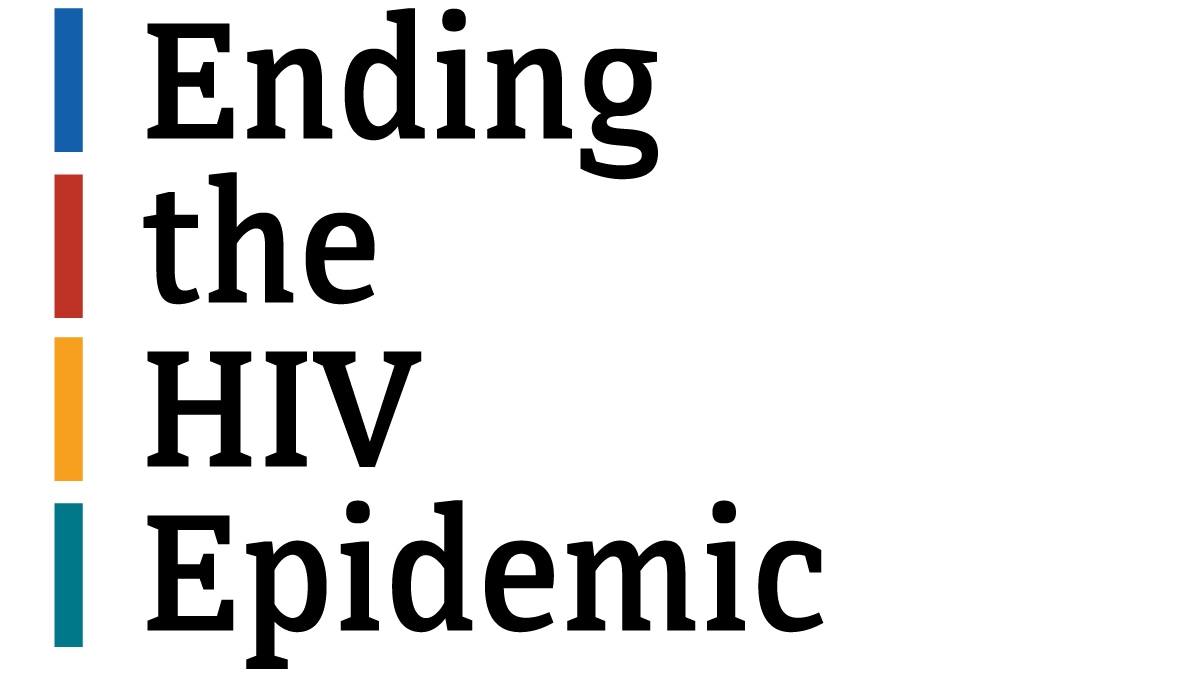At a glance
Working together to help end HIV in the United States, the National HIV/AIDS Strategy and the Ending the HIV Epidemic in the U.S. initiative have established goals to eliminate disease and reduce HIV-related disparities and health inequities. Key indicators allow for timely monitoring of progress toward these goals. This page provides an overview of these initiatives with links to reports that measure key indicators of progress.

About the data
The National HIV/AIDS Strategy (NHAS)
The National HIV/AIDS Strategy for the United States (NHAS) sets bold targets for ending HIV in the United States by 2030, including a 75% reduction in new HIV infections by 2025 and a 90% reduction by 2030. The Strategy focuses on four goals:
- Prevent new HIV infections
- Improve HIV-related health outcomes of people with HIV
- Reduce HIV-related disparities and health inequities
- Achieve integrated, coordinated efforts that address HIV among all partners and stakeholders
The Strategy also designates five priority populations disproportionately impacted by HIV:
- Gay, bisexual, and other men who have sex with men (MSM), in particular Black, Latino, and American Indian/Alaska Native men
- Black women
- Transgender women
- Youth aged 13–24 years
- People who inject drugs (PWID)
Indicators of progress
To monitor national progress toward its goals, the Strategy uses eight data indicators to measure progress:
- Increase knowledge of status to 95% from a 2017 baseline of 85.8%
- Reduce new HIV infections by 75% from a 2017 baseline of 37,000
- Reduce new HIV diagnoses by 75% from a 2017 baseline of 38,351
- Increase PrEP coverage to 50% from a 2017 baseline of 13.2%
- Increase linkage to care within 1 month of diagnosis to 95% from a 2017 baseline of 77.8%
- Increase viral suppression among people with diagnosed HIV to 95% from a 2017 baseline of 63.1%
- Decrease stigma among people with diagnosed HIV by 50% from a 2018 baseline median score of 31.2 on a 10-item questionnaire
- Increase the median percentage of secondary schools that implement at least 4 out of 7 LGBTQ supportive policies and practices to 65% from a 2018 baseline of 59.8%
In addition to the core indicators listed above, the NHAS now includes five additional indicators of progress focused on quality of life among people with HIV that consider physical health, mental/emotional health, and structural/subsistence issues:
- Increase the proportion of people with diagnosed HIV who report good or better health to 95% from a 2018 baseline of 71.5%.
- Decrease by 50% the proportion of people with diagnosed HIV who report an unmet need for services from a mental health professional from a 2017 baseline of 24.2%.
- Decrease by 50% the proportion of people with diagnosed HIV who report ever being hungry and not eating because there wasn't enough money for food from a 2017 baseline of 21.1%.
- Decrease by 50% the proportion of people with diagnosed HIV who report being out of work from a 2017 baseline of 14.9%.
- Decrease by 50% the proportion of people with diagnosed HIV who report being unstably housed or homeless from a 2018 baseline of 21.0%."
Ending the HIV Epidemic Initiative (EHE)
Ending the HIV Epidemic in the U.S. (EHE) is a bold multi-agency and whole-of-society initiative to reduce new HIV infections in the United States by 75% by 2025 and 90% by 2030. EHE increases the nation's investment in proven HIV prevention tools and newer innovative technologies and programs, while ensuring they reach the communities and populations most affected by HIV. EHE provides resources to 50 local areas (48 counties, Washington, DC, and San Juan, Puerto Rico) where more than half of new HIV diagnoses occur and seven states with a substantial rural burden.
EHE's broader goals include:
- Reducing new HIV infections in the United States
- Advancing health equity by scaling up key HIV prevention and treatment strategies
Indicators of progress
EHE uses six HIV data indicators to measure progress toward national 2025 and 2030 HIV prevention goals:
- The estimated number of new HIV infections in a calendar year (HIV Incidence)
- The estimated percentage of people with HIV who have received a diagnosis (Knowledge of Status)
- The number of people with HIV infection that is confirmed by laboratory or clinical evidence in a calendar year (HIV Diagnoses)
- The percentage of people who have received a diagnosis of HIV infection in a calendar year and were linked to HIV medical care within 1 months (Linkage to Care)
- The percentage of people living with diagnosed HIV who have an amount of HIV that is less than 200 copies per milliliter of blood at the most recent test in a calendar year (Viral Suppression)
- The estimated percentage of individuals with indications for pre-exposure prophylaxis (PrEP) coverage classified as having been prescribed PrEP in a calendar year (PrEP Coverage)
Current data releases
- National HIV Progress Report, 2024
- National HIV Prevention and Care Outcomes
- Core Indicators for Monitoring the Ending the HIV Epidemic Initiative (preliminary data): National HIV Surveillance System Data Reported Through September 2024
- Core Indicators for Monitoring the Ending the HIV Epidemic Initiative: National HIV Surveillance System Data Reported through June 2024
- Data Tables: Quality of Life and HIV Stigma— Indicators for the National HIV/AIDS Strategy
